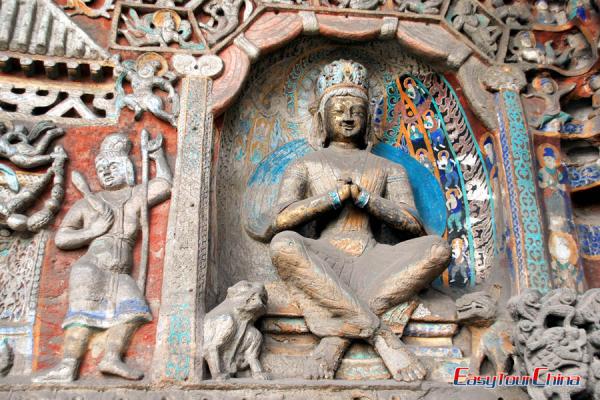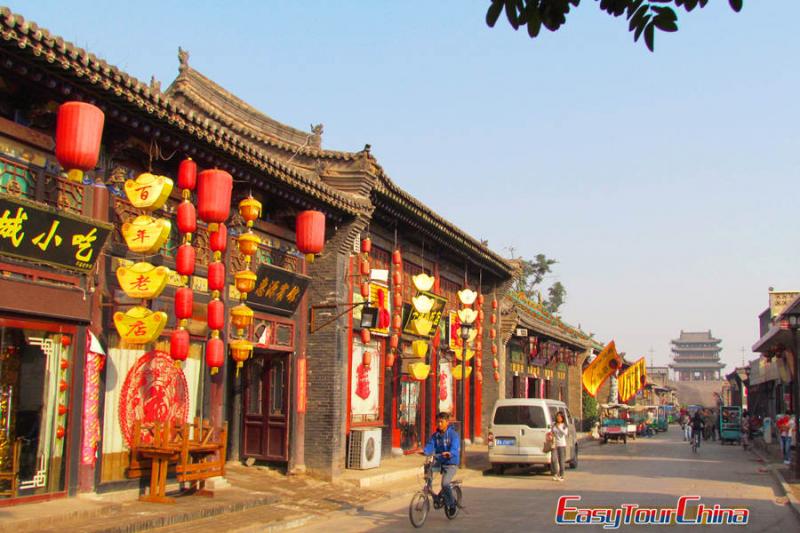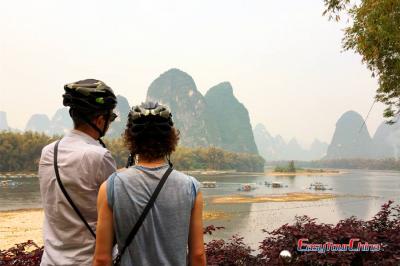Wang Family Compound (courtyard house)
Situated at Jingsheng Town of Lingshi County, some 150 kilometers (93.2 miles) south of Taiyuan (35 km to Pingyao), Wang Family Compound is a masterpiece of Oriental domestic architecture. The compound had been built successively during the periods of Kangxi, Yongzheng, Qianlong and Jiaqing Emperors of Qing Dyansty (1644-1911). It covers a total area of 250, 000 square meters.
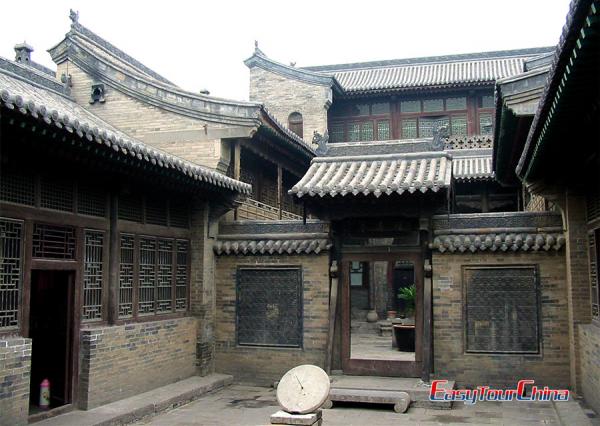 The architectural complex at Gaojiaya nicknamed "China Civil Dwelling House Art Museum", officially open to the public on August 18, 1997, was constructed during 1796-1811. It consists of 35 courtyards, 342 houses, totaling 19572 square meters. The architectural complex at Hongmenbao called "Museum of the Wang Family" open to the public one year later, was built during 1762-1793. It consists of 88 courtyards, 776 houses, totaling 25,000 square meters.
The architectural complex at Gaojiaya nicknamed "China Civil Dwelling House Art Museum", officially open to the public on August 18, 1997, was constructed during 1796-1811. It consists of 35 courtyards, 342 houses, totaling 19572 square meters. The architectural complex at Hongmenbao called "Museum of the Wang Family" open to the public one year later, was built during 1762-1793. It consists of 88 courtyards, 776 houses, totaling 25,000 square meters.
The compound can be divided into three distinct groups known as the Gaojiaya, the Hongmenbao and the Ancestral Temples. The two groups of buildings at Gaojiaya and Hongmenboa stand from east to west facing each other, which are linked with a bridge. They are all fortress-like constructions on the loess plateau, and were built on the terraces of the mountainside.
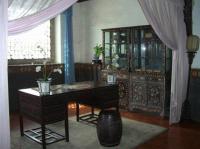 The Gaojiaya (East Courtyards) has a series of dwelling houses that are walled off in the form of an irregular castle, while they each retain the traditional layout of the hall in front with the bedchamber to the rear. Gates stand at each of the four cardinal points, providing access to the various courtyards. The buildings are spread in tiers up the mountainside and are aligned in six parallel complexes. In the centre there are the three main courtyards, which vary in size. The complex to the east is the kitchen, while those on the west served as the private family school and the garden. A secret passage leads into the garden's flower cellar, which provided access in an emergency. At the north of the complex there is a row of thirteen cave dwellings. These command the highest position overlooking the entire area and served also as a watchtower. The arrangement of courtyard within a courtyard, door after door and house above house creates a labyrinthine world.
The Gaojiaya (East Courtyards) has a series of dwelling houses that are walled off in the form of an irregular castle, while they each retain the traditional layout of the hall in front with the bedchamber to the rear. Gates stand at each of the four cardinal points, providing access to the various courtyards. The buildings are spread in tiers up the mountainside and are aligned in six parallel complexes. In the centre there are the three main courtyards, which vary in size. The complex to the east is the kitchen, while those on the west served as the private family school and the garden. A secret passage leads into the garden's flower cellar, which provided access in an emergency. At the north of the complex there is a row of thirteen cave dwellings. These command the highest position overlooking the entire area and served also as a watchtower. The arrangement of courtyard within a courtyard, door after door and house above house creates a labyrinthine world.
A stone bridge over a moat will take you from the Gaojiaya to the Hongmenbao (West Courtyards), which measures 105 meters (344 feet) in width from east to west and 180 meters (591 feet) long from south to north. This complex has only one gate, the door of which was painted red, hence, its name - Hongmenbao (meaning Red Gate Castle). The curtain wall is 8 meters (26 feet) high on its outer side but only 4 meters (13 feet) high from within. Constructed from grey bricks and some 2 meters (6.7 feet) thick, the wall has a battlement top. Within the main courtyards there are cave dwellings over which a second storey has been built. Movement within the castle is facilitated by a street that runs lengthways and which is intersected by three running crosswise. The pattern they form is the same as the Chinese character 'Wang', the family name.
More Attractions in Pingyao
